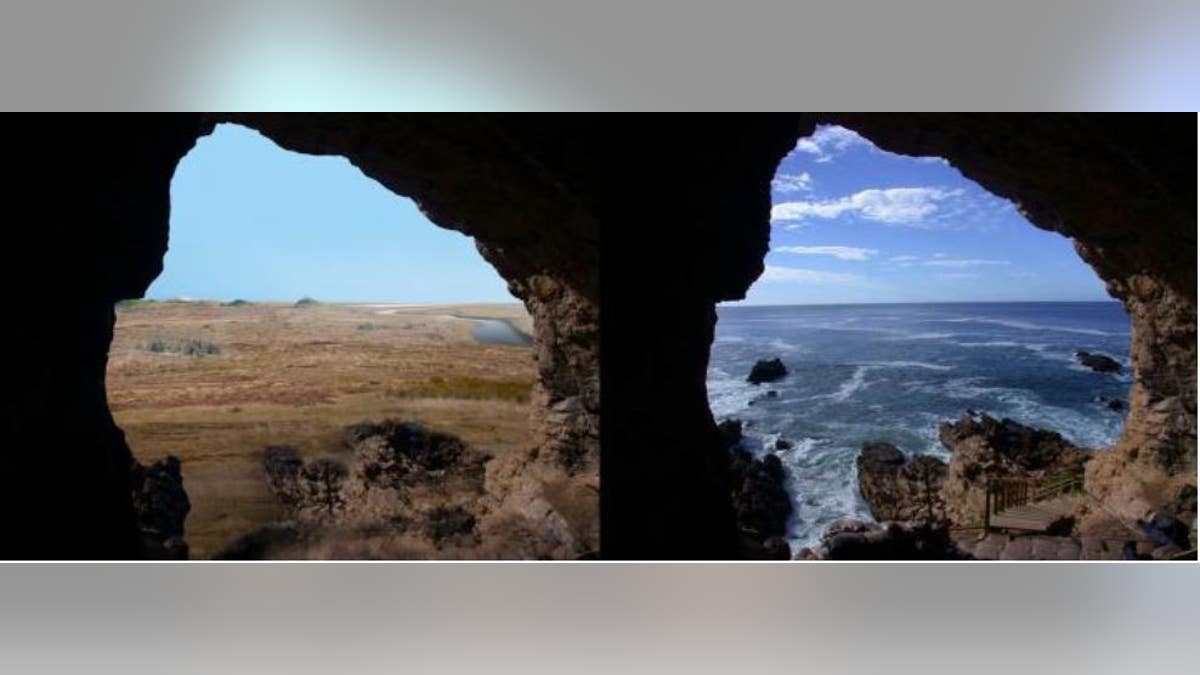Fox News Flash top headlines for May 15
Fox News Flash top headlines are here. Check out what's clicking on Foxnews.com.
Scientists have discovered the earliest evidence for human behavior, projectile weapons and much more at an amazing archaeological site in South Africa, a previously lost world revealed in new research.
Researchers in the area have always faced a challenge in understanding the context of these evolutionary milestones, since most of the landscape used by the ancient people who lived there is submerged underwater. The archaeological remnants are from caves and other areas that now look out on to the sea.
Now, the publication of 22 articles in Quaternary Science Reviews examines this "lost world" in a profound new way, thanks to the efforts of Arizona State University Institute of Human Origins Director Curtis Marean, who began assembling a team to build the ancient landscape's ecology a decade ago.
The work started by using the high-resolution South African regional climate model -- running on U.S. and South African supercomputers as a way to simulate glacial climate conditions. That climate output then fed into a vegetation model that allowed scientists to recreate the vegetation landscape.
ALASKAN LANDSLIDE COULD CAUSE ENORMOUS TSUNAMI, SCIENTISTS WARN

Looking out at the Palaeo-Agulhas Plain from the cave entrance at the Pinnacle Point, South Africa, research site--left, 200,000 years ago during glacial phases and lower sea levels, and right, today where the ocean is within yards of the cave entrances at high tides. (Erich Fisher)
Scientists then harnessed things like marine geophysics and deep-water diving for sample collection to validate the model and adjust its output.
"Pulling the threads of all this research into one special issue illustrates all of this science," said Marean in a statement. "It represents a unique example of a truly transdisciplinary paleoscience effort, and a new model for going forward with our search to recreate the nature of past ecosystems. Importantly, our results help us understand why the archaeological records from these South African sites consistently reveal early and complex levels of human behavior and culture."
PLACES WITHOUT SOCIAL DISTANCING HAVE 35 TIMES MORE POTENTIAL CORONAVIRUS SPREAD, STUDY FINDS
The Arizona State University IHO's field study site of Pinnacle Point sits at the center of diverse and rich ancient record, both geographically and scientifically, having contributed much of the evidence for different milestones on the road to humanity's modern evolution.
"This unique confluence of food from the land and sea cultivated the complex cultures revealed by the archaeology and provided safe harbor for humans during the glacial cycles that revealed that plain and made much of the rest of the world unwelcoming to human life," Marean said.

